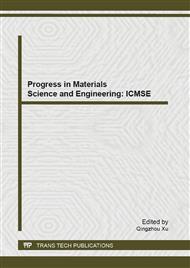p.827
p.833
p.839
p.845
p.854
p.860
p.868
p.875
p.880
Study on Pretreatment Method of X-Ray Real-Time Imaging Digital Image
Abstract:
X-ray nondestructive testing has a wide range of applications, which in materials testing, food testing, manufacturing, instrumentation, automotive parts and other fields having good performance. The paper mainly deals with low contrast X-ray digital images, image edge blur features and digital image preprocessing techniques of contrast. By a crack image taking geometric transformations, gray-scale transformations and image enhancement processing such as pretreatment technology airspace transforms, getting three options that have been able to effectively realize image denoising and enhancement. These three sets of processing solutions, to some extened, opening the image intensity distribution and making cracks sharper image segmentation is the foundation of subsequentence.
Info:
Periodical:
Pages:
854-859
Citation:
Online since:
October 2013
Authors:
Price:
Сopyright:
© 2013 Trans Tech Publications Ltd. All Rights Reserved
Share:
Citation:


